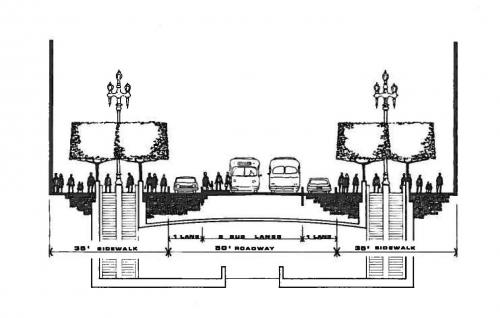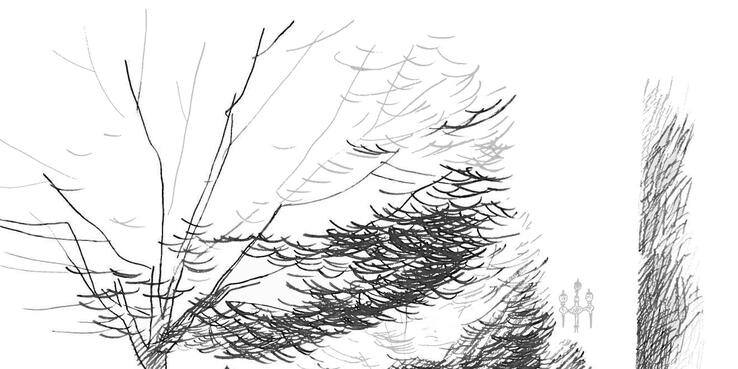SPUR’s basement archive is a treasure trove of vintage planning reports and books. To make these documents available in digital format, we are daylighting the more interesting artifacts on our blog. Today’s find: Market Street Design Report Number 4, published May 9, 1966.
This 50-page report (which was probably considered detailed back in those days), written for the City of San Francisco by Mario J. Ciampi & Associates and John Carl Warnecke & Associates, addressed how to accommodate the anticipated rise in pedestrian, public transit, service vehicle and automobile traffic on Market Street after the completion of BART, then under construction. (Interestingly, in 1966 bike circulation was not taken into account when attempting to improve mobility on Market Street.) Just like today, the Market Street of 1966 was not living up to its potential. In fact, the report quotes then-Mayor John Shelley, who asks, “Why cannot we have a Great Market Street… a place people will come from all over the world to see?” Forty-five years later, San Franciscan are still asking the same question, as we do in the current issue of the Urbanist.
So what was the vision for Market Street after the completion of BART way back when? The report offers five different designs, or “circulation plans,” all of which call for widening sidewalks and reducing roadway widths. One of the five caught our eye: It called for two traffic lanes, one pedestrian island and 2 lanes for the exclusive use of buses. Sounds an awful lot like bus rapid transit, (BRT) doesn’t it?

In fact this may be the earliest BRT plan on record. As the urban planning/public transit historians among you know, the first BRT system was implemented in Curitiba, Brazil in 1974 — eight years after the release of this report.
This circulation plan with dedicated bus lanes favored public transit and pedestrian circulation, but unfortunately it was not meant to be. Forty-five years ago, dedicated bus lanes would have made traffic conditions worse on Market Street. “How could this be?” you might ask. According to the report, this was the only plan that was not able to accommodate 1966 traffic circulation, so the anticipated traffic increase resulting from BART would have overwhelmed Market Street. The report also went on to say that any spillover of private automobiles and buses would have diverted too much traffic to the already overburdened adjacent streets. In addition, the report offers a lackluster (but perhaps true) reason for not embracing a Market Street that would favor public transit: “…bus operations are still questionable.” Plenty of people today still have the same exact sentiment.
